“Professor Johnston often said that if you didn’t know history, you didn’t know anything. You were a leaf that didn’t know it was part of a tree.”
~Michael Crichton
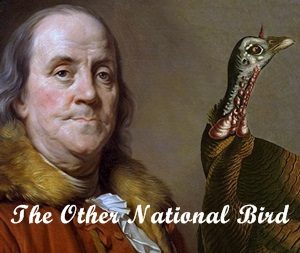
1784 – In a letter to his daughter, Benjamin Franklin expressed his disapproval with the country adopting the bald eagle as our national symbol.
He claimed that the drawing that had been produced looked like a turkey anyway and that such a bird would actually be preferable to the eagle.
“I am on this account not displeased that the figure is not known as an Eagle, but looks more like a Turkey. For the truth, the Turkey is in comparison a much more respectable bird, and withal a true original native of America… He is besides, though a little vain and silly, a bird of courage, and would not hesitate to attack a grenadier of the British Guards who should presume to invade his farm yard with a red coat on.”
So yes, he did float the idea that a turkey might be a better bird for a national symbol. But only within the context that people were claiming the bald eagle symbol already looked like a turkey. Franklin never actually advocated this notion publicly or seriously, but his remarks, made privately to his daughter, became legendary … but the myth lives on.
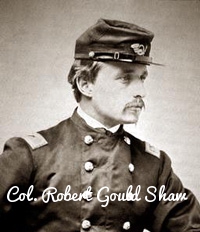
1863 – John Albion Andrew, Governor of Massachusetts, received permission from the Secretary of War to raise a militia organization for men of African descent.
The 54th Regiment Massachusetts Volunteer Infantry, commanded by Col. Robert Gould Shaw, gained national recognition on July 18, 1863, when, as depicted in the 1989 Academy Award-winning film Glory, they spearheaded an assault on Fort Wagner near Charleston, South Carolina.
272 of the 600 men who charged Fort Wagner were “killed, wounded or captured.”

1915 – The Rocky Mountain National Park was established by an act of the U.S. Congress. The 265,000 acre park was formally dedicated nine months later.
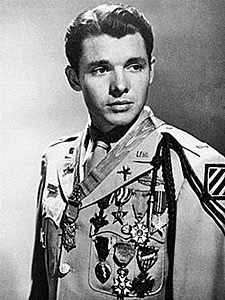
1945 – Gather around, children. I’m going to tell you a long story about a very brave man.
2nd Lieutenant Audie Murphy and some 40 U.S. troops sat shivering in a frigid, snow-covered clearing near the Alsatian town of Holtzwihr when the winter stillness was suddenly broken by the thunderclap of an enemy artillery barrage. In the distance, some 250 German troops and six tanks emerged from the woods.
As he watched the Germans line up for an attack, Murphy knew that his men stood no chance against so large a force, so he instructed most of them to withdraw to pre-prepared defensive positions along a nearby tree line.
As they ran for cover, he stayed behind and used his field telephone to call in an artillery strike. He had just enough time to radio in his coordinates before German tank fire erupted around him, but he held his ground and continued calling in the Allied artillery.
In seconds, a curtain of friendly fire rained down between him and the advancing German infantry, pitting the open field with craters and shrouding everything in a haze of smoke. After emptying his M-1 carbine at the enemy, Murphy grabbed his field telephone and took cover atop a burning tank destroyer.
Murphy saw that its .50-caliber machine gun turret was still operational. He quickly seized the gun and sprayed a steady fire against the German troops nearest his position. He continued firing burst after burst, mowing down Nazi troopers by the dozen and keeping the tanks at bay.
All the while, he remained on the phone, directing artillery fire ever closer to his own position and dealing catastrophic damage to the advancing infantry.
Despite the hail of Allied artillery shells, fresh waves of German infantrymen continued inching toward Murphy’s position. One squad tried to make a flanking maneuver on his right side, only to be cut down in a hail of pinpoint fire from his .50-caliber gun.
As Murphy continued his one-man attack, German gunners riddled his smoldering tank destroyer with small arms and tank fire. One blast nearly threw him from the vehicle and sent razor sharp shrapnel flying into his leg, but he took no account of the wound and kept fighting. It was only when Murphy ran out of ammunition that he finally withdrew.
Dazed and bloodied, he jumped from the still-burning tank destroyer and limped to his men. Murphy had personally killed or wounded some 50 enemy troops and directed artillery against dozens more. Even after reaching safety, he refused to be evacuated from the field and instead rallied his men in a counterattack that drove the Germans back into the woods.
Audie Murphy was hailed a national hero and awarded the Medal of Honor for his jaw dropping exploits at Holtzwihr, yet when he died in a plane crash in 1971, the “national hero” was only given a combined total of 1 minute and 30 seconds of news time by the major television news networks.
His gravesite at Arlington National Cemetery is the second most visited gravesite on that hallowed ground, second only to the grave of President John F. Kennedy.

1960 – Danny Heater set a worldwide high school basketball scoring record when he scored 135 points for Burnsville High School (West Virginia). Heater’s total, which included 55 points in the last 10 minutes, came on 53 field goals in 70 tries (the 3-point shot didn’t yet exist) and 29 of 41 foul shots.
The real downside was the game’s final score; a 173-43 rout of little Widen High of Clay County.

1973 – Actor Edward G. Robinson (Little Caesar, Key Largo, The Ten Commandments, Double Indemnity) died of bladder cancer at the age of 79.
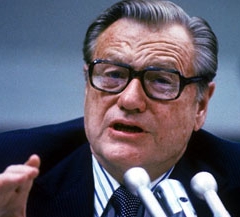
1979 – Former New York Governor and U.S. Vice President Nelson A. Rockefeller died from a heart attack at the age of 70.

1983 – University of Alabama football coach Paul Bear Bryant died after suffering a massive heart attack. He was 69. During his 25-year tenure as Alabama’s head coach, he amassed 232 victories, six national championships and thirteen conference championships.

1988 – The Andrew Lloyd Webber musical Phantom of the Opera, now the longest-running show in Broadway history (by a wide margin), opened at the Majestic Theater in New York City.

1996 – First Lady Hillary Rodham Clinton testified before a grand jury connected to the Whitewater probe. It was the first time in American history that a First Lady had been subpoenaed to testify before a grand jury.
She testified that they never borrowed any money from the bank, and denied having caused anyone to borrow money on their behalf. Over the course of the investigation, fifteen individuals – including Jim and Susan McDougal, White House counsel Webster Hubbell, and Arkansas Governor Jim Guy Tucker – were convicted of federal charges.
Other than Jim McDougal, none of the convicted agreed to cooperate with the Whitewater investigators. Clinton pardoned four of them in the final hours of his presidency.
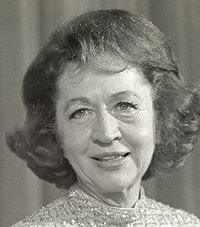
1997 – Jeane Dixon, one of the best-known American self-proclaimed psychics and astrologers of the 20th century, died of cardiac arrest at the age of 93.
I wonder if she saw it coming.
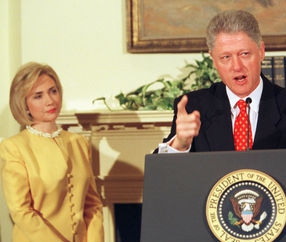
1998 – President Bill Clinton, standing with his wife, spoke at a White House press conference, and issued a forceful denial of a relationship with Monica Lewinsky:
“Now, I have to go back to work on my State of the Union speech. And I worked on it until pretty late last night. But I want to say one thing to the American people. I want you to listen to me. I’m going to say this again: I did not have sexual relations with that woman, Miss Lewinsky. I never told anybody to lie, not a single time; never. These allegations are false. And I need to go back to work for the American people.”
Seven months later, he admitted he had a relationship with her.

2016 – Actor Abe Vigoda, best known for his roles as Salvatore Tessio in The Godfather and Det. Philip Fish in Barney Miller, died of natural causes at the age of 94.
Compiled by Ray Lemire ©2019 RayLemire.com / Streamingoldies.com. All Rights Reserved.